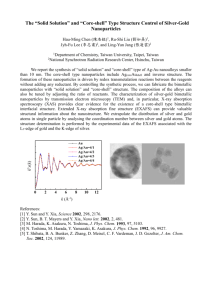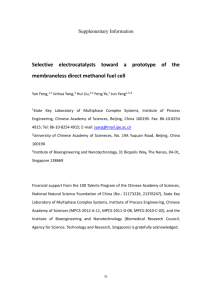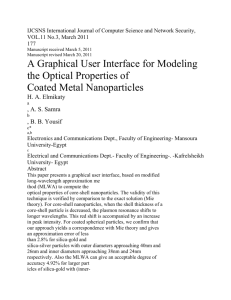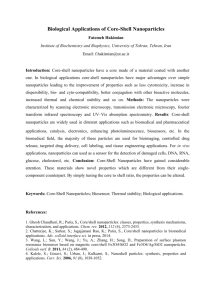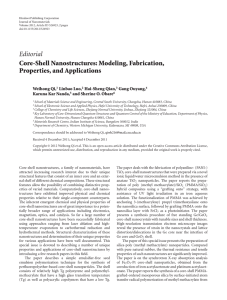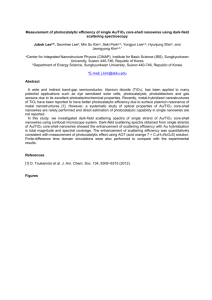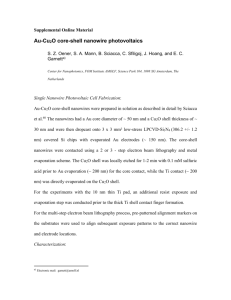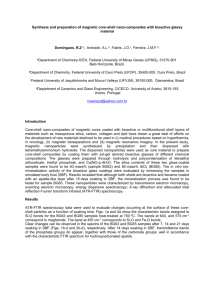Supplementary Information Alloy Cu3Pt nanoframes through the s
advertisement
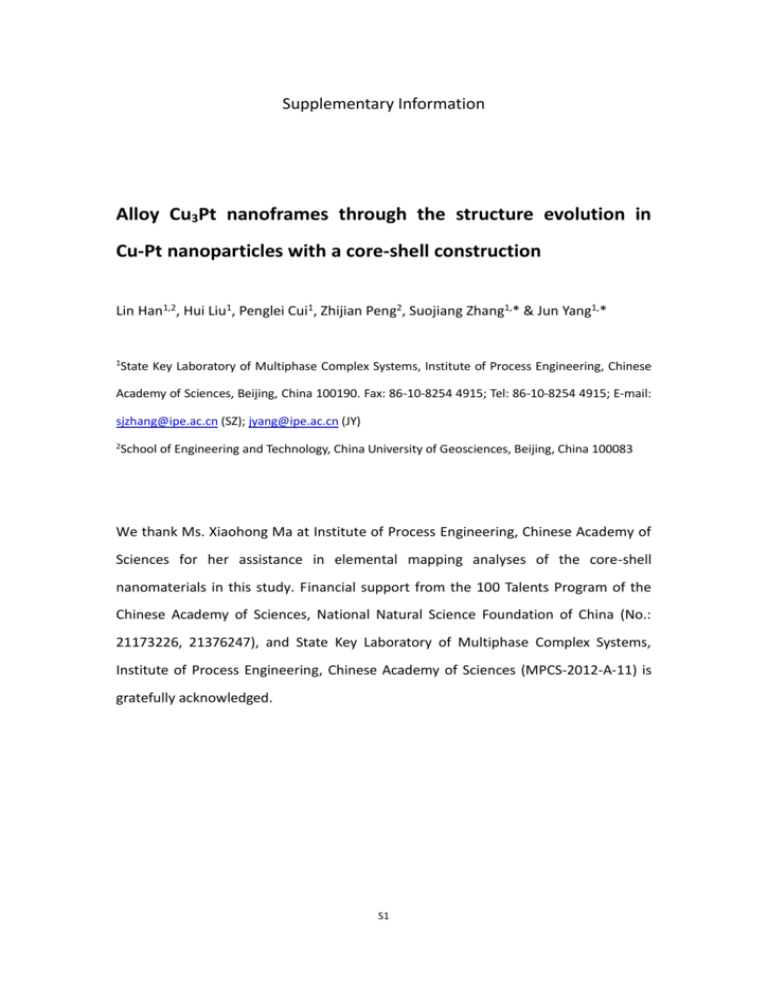
Supplementary Information Alloy Cu3Pt nanoframes through the structure evolution in Cu-Pt nanoparticles with a core-shell construction Lin Han1,2, Hui Liu1, Penglei Cui1, Zhijian Peng2, Suojiang Zhang1,* & Jun Yang1,* 1State Key Laboratory of Multiphase Complex Systems, Institute of Process Engineering, Chinese Academy of Sciences, Beijing, China 100190. Fax: 86-10-8254 4915; Tel: 86-10-8254 4915; E-mail: sjzhang@ipe.ac.cn (SZ); jyang@ipe.ac.cn (JY) 2School of Engineering and Technology, China University of Geosciences, Beijing, China 100083 We thank Ms. Xiaohong Ma at Institute of Process Engineering, Chinese Academy of Sciences for her assistance in elemental mapping analyses of the core-shell nanomaterials in this study. Financial support from the 100 Talents Program of the Chinese Academy of Sciences, National Natural Science Foundation of China (No.: 21173226, 21376247), and State Key Laboratory of Multiphase Complex Systems, Institute of Process Engineering, Chinese Academy of Sciences (MPCS-2012-A-11) is gratefully acknowledged. S1 (a) (b) 50 nm 2 nm (c) (d) 2 nm 2 nm Figure S1 | Cu nanoseeds. TEM image (a) and HRTEM images (b,c,d) of the Cu nanoparticles synthesized in oleylamine at 180C, which were used as seeds for the formation of core-shell Cu-Pt nanoparticles. S2 a0 b0 b c a a1 a c0 20 nm b1 c1 Cu c2 Pt c3 Mix 2 nm a2 b b2 2 nm a3 c b3 2 nm Figure S2 | Characterization of initial core-shell Cu-Pt nanoparticles. Schematic illustrations (a series), corresponding TEM/HRTEM images (b series), and element mapping (c series) of the core-shell Cu-Pt polyhedra synthesized in oleylamine by successive reduction of Cu(acac)2 and H2PtCl6 at 180C. S3 (111) 30 40 60 70 (222) (220) (220) 50 (311) Cu Pt (200) (200) (111) Intensity (a.u.) (a) 80 90 o 2 ( ) 30 40 (311) (220) (200) (111) Intensity (a.u.) (b) 50 60 70 80 90 o 2 ( ) Figure S3 | XRD patterns of initial Cu-Pt core-shell polyhedra and final Cu3Pt alloy nanoframes. XRD patterns of (a) bimetallic Cu-Pt core-shell polyhedra with Cu and Pt reference (JCPDS Card File 892838 for Cu and 882343 for Pt, respectively) and (b) alloy Cu3Pt polyhedra with reference (JCPDS Card File 351358). S4 (a) 2+ Cu 2p3/2 Intensity (a.u.) Cu 2p3/2 938 937 936 935 934 933 932 931 930 929 Binding Energy (eV) (b) Pt 4f7/2 Intensity (a.u.) Pt 4f5/2 2+ Pt 4f5/2 2+ Pt 4f7/2 82 80 78 76 74 72 70 68 66 Binding Energy (eV) Figure S4 | XPS spectra of final alloy Cu3Pt nanoframes. Cu 2p3/2 (a) and Pt 4f XPS spectra (b) of alloy Cu3Pt nanoframes evolved from core-shell Cu-Pt nanoparticles with polyhedra in tolueen at ambient conditions. S5 (a) (b) 20 nm 2 nm Figure S5 | CuS-hPt heterogeneous nanodimers. TEM image (a) and HRTEM image (b) of CuS-hPt heterodimers formed by reacting element sulfur and core-shell Cu-Pt nanoparticles in toluene at ambient conditions. S6 (a) (b) 20 nm 5 nm (c) (d) 50 nm 5 nm Figure S6 | Core-shell Cu-Pt polyhedra and alloy Cu3Pt nanoframes on carbon support. TEM (a,c) and HRTEM images (b,d) of core-shell Cu-Pt polyhedra and alloy Cu3Pt nanoframes loaded on Vulcan carbon support. S7
